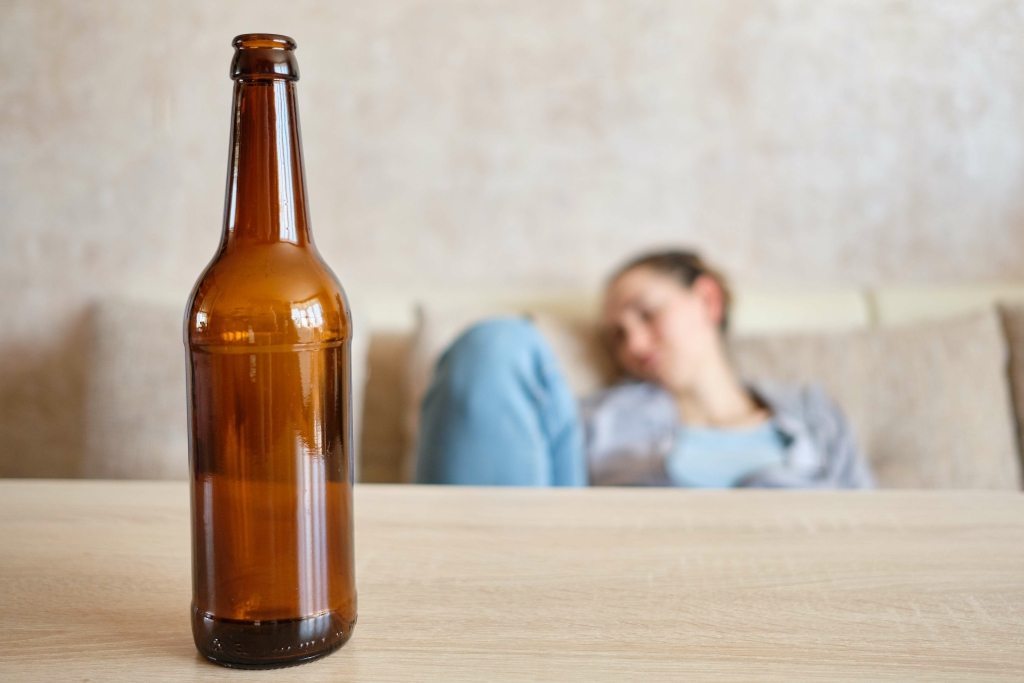Moreover, “women appear to be more vulnerable than men to many adverse consequences of alcohol use,” NIAAA reports, including a higher risk for alcohol-related liver, brain, and heart damage. This may account for the increase in deaths over the past few years from alcoholic liver disease, specifically cirrhosis and liver cancer, which researchers attribute primarily to alcohol abuse in women. Breast cancer develops in the cells of breast tissues, sometimes forming a noticeable lump, but not always. Having just one alcoholic drink a day increases the risk by 5 to 9 times of developing breast cancer in a woman. Alcoholism in women is increasing as a growing number of young women turn to alcohol to cope with mental health issues. As rates of anxiety and depression rise among young adult women, alcohol misuse is also going up—along with related health risks.
Maybe the “mother’s little helper” we all need is a little actual help. There’s a risk, inherent in this topic, of coming off like a particularly joyless Mennonite, and I’m certain that fate will be inescapable here. In the past I’ve criticized the CDC for telling women who aren’t on birth control that they shouldn’t drink at all, a rule I still think is too paternalistic. Sexist doctors were “more likely to just see women as making annoying complaints that were about things that were all in their heads. And it was delightful to have a pill that seemed to take care of that, from the doctor’s point of view,” says David Herzberg, a historian at the University at Buffalo and the author of Happy Pills in America.
Co-Occurring Mental Health Disorder Treatment
For people over 26, women are increasing their alcohol consumption faster than men. Among teens and young adults, however, there’s an overall decline in drinking. Anyone who has struggled to overcome alcohol dependence or an alcohol abuse problem knows how difficult aprocess recovery can be. But the evidence suggests that women are just as likely to recover as men once theybegin treatment—a glimmer of hope that may make the journey to recovery worth trying. Women are more likely than men to suffer from mood, anxiety, and eating disorders that may benefit from being treated at the same time as the substance abuse disorder. However, few substance abuse treatment programs provide adequate treatment of psychiatric disorders.
The Importance of Life Insurance for Medical Practitioners
That’s because women with addiction are more likely to be in relationships with other people who also have addiction. Women with alcohol addiction face a lower risk of violence when they have partners without addiction. “Progesterone has metabolites (products of progesterone metabolism) that interact with brain circuitry the same way alcohol does,” she says. A recent analysis of alcohol companies’ Facebook and Instagram posts by researchers in the U.K.
Can science reverse the ageing process?
“I thought, Maybe I need to look at this,” says Pitts, who now works from home. She made a conscious decision to change her drinking habits and these days rarely drinks more than a glass of wine on weekends or at social occasions. In 2019, she returned to UNC-Chapel Hill and finished her degree in women’s and gender studies, even completing a capstone project on the links among sexual violence, trauma and addiction.
- The situation changed in the early 1990s after the FDA and the National Institutes of Health issued guidelines aimed at increasing the representation of women and minorities in research studies.
- The Yale researchers hope to develop effective treatments for women with AUDs.
- Other advocates argue for including guidelines for low-risk drinking on each container.
How Is Recovery.com Different?

She leads Avery Lane’s clinical programming with heroin addiction a focus on evidence-based and holistic care for women. Some changes are subtle while others may seem painfully obvious to you. If you’ve noticed any of the following, it’s okay to wonder if your body is trying to tell you something.
Although binge drinking remains more common among men, the gender gap is narrowing as rates among women increase. As mental health issues in women increase, young women are using alcohol to self-medicate the depression, anxiety, and other issues. And research has found that people who use alcohol in this way are more likely to develop alcohol dependence. According to Chou, the gender gap is narrowest for those born in 1966 and after. “The consistent increases among women in alcohol use, binge drinking, and alcohol use disorder are alarming,” she says. “The narrowing of the gender gap is of great concern.” It also runs contrary to the World Health Organization’s goal of reducing the social, medical, and economic consequences of alcohol, she adds.
Alcoholism can severely impact various aspects of life, particularly relationships. Understanding these effects can help individuals recognize the signs of dysfunction and seek the appropriate help. Sunnyside Med offers access to compounded naltrexone (50mg + B6 5mg), paired with behavioral tools to help you reduce your drinking over time. Alcohol hepatitis and cirrhosis of the liver are two conditions women develop sooner and more often than men. Alcohol hepatitis refers to swelling and inflammation of the liver, which eventually can lead to scarring of the liver, or cirrhosis, which can lead to death. Mark S. Gold, M.D., is a pioneering researcher, professor, and chairman of psychiatry at Yale, the University of Florida, and Washington University in St Louis.

- The male mortality rate increased by 12.5% between 2018 and 2020, while the rate among females spiked by 14.7%, the researchers found.
- And because alcoholism was assumed to be a mostly male problem, no-one wondered what not studying women and alcoholism might miss.
- These results are much lower than those found in the Hazelden Betty Ford Foundation survey.
- Maintain your profile by updating your photos, video links, treatment services, and contact details to ensure optimal visibility.
- Social norms and stigma can make it harder for women to recognize or admit to addiction.
High-risk drinking—defined by the NIAAA as more than three drinks on a given day or more than seven per week—is linked to some 200 diseases, including cancers, and psychiatric disorders. (The study also found that the share of both men and women high-risk drinkers increased by nearly 30% in that same 11-year period. Not only are women less able to tolerate the effects of alcohol than men, they are also less likely to seek specific help to overcome any drinking problems they develop. Men who abuse alcohol are more likely to enter alcohol-treatment programs, whereas women are more inclined to seek help from primary care practitioners and mental health counselors.
Alcohol Abuse Challenges Faced by Women
Anxiety kept her up at night, she says, and she started having suicidal thoughts. Perhaps most concerning is that the rising gender equality in alcohol use doesn’t extend to the recognition or treatment of alcohol disorders, Sugarman says. So even as some women drink more, they’re often less female alcoholic likely to get the help they need.
One might dismiss the spike as attributable to the stresses of the pandemic, except that women’s high-risk drinking was increasing rapidly before then, too. Men born in the early 1900s were three times as likely as women to drink in problematic ways; today, women are almost as likely as men to do so. Female college students now binge drink more than male college students do. While alcohol misuse by anyone presents a serious public health concern, women face alcohol-related problems sooner and at lower drinking levels than men.
Write a comment